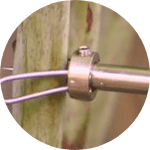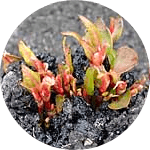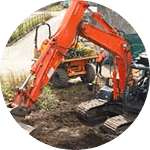Spanish Bluebell Removal & Control

The overview
Common Name: Spanish bluebell
Latin name: Hyacinthoides hispanica
In Detail
- The plant is native to south-western Europe, records of the species in the UK go back to 1683 and is thought to have escaped from gardens in the early 1900’s.
- Spread of the plant is through seed and vegetatively via the underground white bulbs.
- The plant prefers shadier areas but will grow in numerous habitats including gardens, woodland and woodland edges and hedgerows.
Images supplied by GBNNSS
Who we help
We have a long track record of managing some of the most complex sites in the country and have worked with the Environment Agency on several large flood alleviation projects, as well as providing advice to the majority of house builders and developers in the UK.
Click here to view who we help







Identification
- A medium size perennial herb with white spherical bulbs. The narrow tough green leaves grow 20 to 50cm in length. Each bulb produces 4-8 leaves, these tend to be erect prior to flowing, spreading and falling over later in the season.
- The plant flowers from April to early June, flowers are lilac to blue in colour and are bell shaped, flaring out or curling back slightly towards the tips. The flowers are generally unscented.
- Anthers are blue in colour compared to the creamy white anther of native bluebell.
- All above ground vegetation dies back once the plant has seeded making identification in late summer and winter difficult.
What’s the problem?
- Spanish bluebell is a non-native species with widespread distribution over much of the UK and is thought to have been accidently introduced to the wild from gardens.
- The plant spreads readily by seed and by underground runners which produce new bulbs.
- This species can hybridise with our native bluebell changing native population genetics.
- Both the Spanish bluebell and the hybrids are displacing native bluebells in their natural range.
What are the Legal Implications? *England
- Listed as a Schedule 9 species under the Wildlife and Countryside Act 1981, it is an offence to plant or allow to spread into the wild,
- Offences under the Wildlife and Countryside Act 1981 can result in possible fines and prison sentences,
- It is not an offence to have Spanish bluebells or the hybrids on your land and you do not need to notify anyone on its presence.
- Soils containing the plant are classified as controlled waste and should be disposed of at licensed landfill.
Control Methods
Mechanical Control
- The plants and bulbs can be mechanically excavated and removed although care should be taken to remove all of the plant material as missed bulbs have the potential to propagate new colonies. The best time to undertake mechanical control is early spring before the plant starts flowing. Bulbs can survive garden composting.
- Waste materials containing the Spanish bluebells are considered ‘controlled’ waste and must be disposed of appropriately.
Chemical Control
- Bluebells are resistant to many herbicides commonly used in the garden. Applications of herbicide are best made after the plant has flowered, flower heads should be cut to prevent the formation of seed. Repeat applications will be required to deplete the soil seed bank.
When treating large areas, a suitable grass and forb mix should be sown to prevent bare ground and colonisation of other unwanted species.
If you have concerns over Spanish bluebell species on your land, if you are unsure of your legal responsibilities, or, if you would like a quotation for control, please contact one of our specialist surveyors. Treatment costs start at £380.00 + VAT.

Where we have worked
We operate nationwide with a Rapid Response Team on standby 7 days a week, to deal with the most urgent client enquiries.
We’re a dedicated team of professionals who share a great deal of experience. We invest heavily in the continual training of all our employees, ensuring you always have a highly qualified team working on your project with the latest industry accreditations.
Our process

1. Identify
Our first step is to identify if you have an invasive plant. For a quick ID, you can send us some photos. Alternatively, we can carry out a full site survey to confirm the extent of the infestation.

2. Solution
We will provide a range of treatment options individually tailored depending on your site requirements.

3. Quote
A detailed breakdown of costs for each phase of treatment will be provided, including on-going monitoring programmes with insurance backed guarantees.

4. Removal
Our experienced and professional in-house teams will carry out the treatment to the highest of standards to achieve full eradication. All works are carried out in accordance with the INNSA Code of Practice.

5. Treatment
A range of treatment solutions are available, from in-situ herbicide application to excavation and removal or burial. All carried out in-house by our experienced team.

